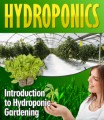Salespage Snapshot

Table of Contents
Introduction ….. 3
Chapter 1: a Peek into a Greenhouse: a Primer 6
What is a greenhouse? ………. 6
How does a greenhouse capture heat? ………. 6
Chapter 2: Types of Greenhouses ……. 10
Hot Greenhouse ……. 11
Warm Greenhouse …. 11
Cool Greenhouse …… 12
Lean-To ……. 12
Detached …… 12
Ridge/Furrow 13
Glass 15
Fiberglass ….. 15
Plastic ………. 15
Polythylene … 16
PVC .. 16
Chapter 3: Tools and Materials for Your Greenhouse … 17
Greenhouse tables, shelving and plant holders …….. 19
Greenhouse garden coil indoor/outdoor watering wand ……. 20
Chapter 4: Tips for Your Greenhouse .. 21
Chapter 5: Greenhouse Resources / References for Hobbyists 23
Your Wonderland……… 26
Conclusion……. 31
Sample Content Preview
A greenhouse is also called a glasshouse or a hothouse. It is a structure where plants – fruits, vegetables, flowers – are grown. It attracts heat because the sun‟s electromagnetic radiation warms the plants, soil, and other components within the greenhouse. Air is warmed from the hot interior area inside the structure through the roof and wall.
How does a greenhouse capture heat?
A greenhouse uses a special kind of glass that acts as a medium which selectively transmits spectral frequencies. Spectral comes from the word “spectrum”.
In layman‟s terms, a spectral frequency can be defined in terms of the following principle: any object in the universe emits, radiates or transmits light. The distribution of this light along an electromagnetic spectrum is determined by the object‟s composition.
Therefore, the glass of a greenhouse traps energy within the greenhouse and the heat in turn provides heat for the plants and the ground inside the greenhouse. It warms the air near the ground, preventing it from rising and leaving the confines of the structure.
For example, if you open a small window near the roof of a greenhouse, the temperature drops significantly. This is because of the autovent automatic cooling system. An autovent is simply a device used by greenhouses that maintains a range of temperatures inside. This is how greenhouses trap electromagnetic radiation and prevents convection (transference of heat by currents within a fluid).
Curious about how the idea of a greenhouse came about? It goes back to the days of the Romans, who – as history annals show – were the first people to create a structure to protect plants. Using heated pits, they put up slabs of rock to form primitive greenhouses. The term “glasshouse” which is the correct name of this structure, was adopted sometime in the 17th and 18th centuries.
At that time, however, the error was in believing that heat was more important than light for plants to thrive. Structures were being built to exclude the entry of light, but by the time the glass tax of 1845 was abolished, the design of greenhouses started to change.
Builders realized then that a curved roof instead of a flat one allowed higher concentrations of the sun‟s rays, and that by using iron instead of wood, the greenhouse could be structurally reinforced and made capable of absorbing more light.
A man named Joseph Paxton, a horticulturist, appeared on the scene and introduced changes to the greenhouse design concept. He was famous for the Palmhouse at Kew Gardens which he built in 1842. It measured 110 meters long, 30 meters wide and over 20 meters high. Nine years later, he built the Crystal Palace.
It has been forty years now since major improvements in materials and design have been integrated into the greenhouse, and it is now very much a feature of any home garden.
One greenhouse principle is the ability to extend the growing season. Early vegetables can be planted indoors and then transplanted when they mature. A greenhouse owner also gains several weeks to the growing and sowing period especially if there is a form of heating installed.
Controlling temperature, light and moisture is one of the things that greenhouse owners can do; this way they obtain the guaranteed results they want. Our science classes taught us that many plant varieties enjoy a warm, moist temperature.
In addition to extending the growing season and being able to control temperature and moisture inside a greenhouse, a gardener learns to hone his gardening skills by getting acquainted with as many varieties as he can in the greenhouse.
He may choose to specialize on one species of fruit or vegetable or flowering plant. Many have built greenhouses for the purpose of growing and preserving their orchids.
Whatever the intent is, a greenhouse will deliver hours of emotional satisfaction to owners. Imagine being able to grow juicy tomatoes or producing new kinds of plants by the simple act of propagation.
Don‟t be discouraged by the fact that you have limited space in your garden or that is completely paved or concreted. You can still make use of limited space.
If space is a problem, there are what people call “free standing” greenhouses that take just a few square feet of space, and some can be installed on balconies or roof tops.
Other Details- 1 Ebook (PDF, DOC), 32 Pages
- 1 Squeeze Page (HTML)
- 2 Ecovers (PSD, PNG)
- Year Released/Circulated: 2022
- File Size: 16,330 KB
License Details:
[YES] Can be sold
[YES] Can offer Resell Rights
[YES] Can offer Master Resell Rights
[YES] Can resell Private Label Rights
[YES] Can be edited
[YES] Can put your name as the author
[YES] Can be broken down into articles
[YES] Can be used as web or e-zine content
[YES] Can be added into membership sites
[YES] Can be sold in any format
[YES] Can be packaged
[YES] Can be offered as a bonus
[YES] Can be sold on auction sites
[YES] Can be published offline
[YES] Can be given away (in any format)














